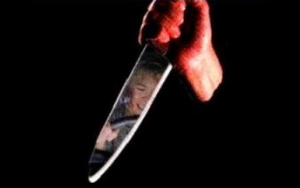
Director: Dwight H. Little
Writer: Alan B. McElroy
Starring: Donald Pleasence, Ellie Cornell, Danielle Harris, George P. Wilbur
Rating: R (USA), 18 (UK), M (Australia)
By 1988, the horror climate had changed and sequels had become big money makers at the box office. The genre to exploit this the most was the slasher film, with Friday the 13th releasing its seventh entry and A Nightmare on Elm Street its fourth. It seemed inevitable that Halloween would eventually make a comeback but what fans really wanted to know was whether or not their favourite villain, Michael Myers, would make his much-anticipated return. It had, after all, been seven years since his last appearance and since then he had become a marketable commodity, just like Jason Voorhees and Freddy Krueger, with his face appearing on comics, lunchboxes and even action figures. As early as 1986 there had been talk of a new sequel, with the original creators, John Carpenter and Debra Hill, discussing the possibility of a third sequel after being approached by Cannon Films, who had recently completed production on another popular sequel, The Texas Chainsaw Massacre 2. They had contacted Carpenter’s friend, an author by the name of Dennis Etchison – who had penned the novelizations of Halloween 2 and 3 under the pseudonym Jack Martin – to develop a new story. His concept would be based on the premise that Halloween had been banned in Haddonfield, with the residents of the once-peaceful town living in fear that one day Michael may return and so chose to ignore his existence, which would then cause his ghost to become resurrected and cause havoc once again. Moustapha Akkad, who had pioneered the franchise since its inception in 1978, rejected the idea after the commercial failure of Halloween 3 and insisted that it must be a more traditional slasher, prompting Carpenter to walk from the project and sell his shares in the rights to the producer.
Intending to breathe new life into the series, Akkad purchased the rights from Dino De Laurentiis, who had produced Halloween 3, through his own production company Trancas International and set about developing a sequel that would be a direct continuation from the original movies. Donald Pleasence once again agreed to portray the role of eccentric psychiatrist and Michael Myers nemesis Dr. Loomis, though the production would encounter a problem when Jamie Lee Curtis, now a major Hollywood star with successful roles in A Fish Called Wanda, once again declining the chance to return. This would force the filmmakers to have to rethink the story and somehow find a way to make a Halloween movie without Laurie Strode. With Carpenter refusing to participate, Akkad approached Dwight H. Little, an Ohio director whose most recent effort, Bloodstone, shared various similarities with Akkad’s work. Having been a fan of the franchise since the first movie movie had been released whilst he was in film school, Little was enthusiastic at the chance to helm a Halloween feature and immediately contacted fellow Cleveland native Alan B. McElroy, who had been plucked from the streets of Los Angeles and enrolled in the Columbia Pictures Writing Program, about creating a story.
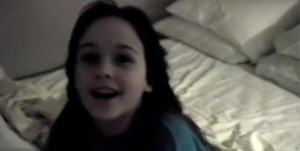
One issue the production faced was the looming Writer’s Guild strike which was set to commence on March 7 1988, which would force McElroy to not only develop a concept but also submit the final draft of the script in just eleven days. Halloween 4 (appropriately subtitled The Return of Michael Myers) was set ten years after the events of the first two movies and would feature Michael, comatose since the fire that had supposedly killed both him and Loomis, being transported from Ridgemont Federal Sanitarium to Smith’s Grove Sanitarium (where he had spent fifteen years of his life until his escape at the age of twenty-one), but would once again slip the net and make his way to Haddonfield after learning that Laurie had died in a car crash and that her daughter, Jamie, had been adopted. Sharing a psychic link with the young child, Michael eventually tracks her down but Loomis, horribly scarred from the inferno that had closed Halloween 2, would come to save the day. The final scene would see Jamie stabbing her stepmother and seemingly continuing Michael’s evil ways.
For the role of Jamie, Little travelled to New York to meet ten-year old Danielle Harris, whose audition tape had made a lasting impression. Harris had started out in beauty pageants when she was five before landing her first acting role at seven on the television show Spencer: For Hire. It was during her two year run as Samantha Garretson in ABC‘s One Life to Live that the part in Halloween 4 would present itself. Her closest rival during the audition was Melissa Joan Hart, who would later become a star with her turn as the eponymous heroine in the long-running show Sabrina the Teenage Witch. Jamie’s stepsister, Rachel Carruthers, was originally offered to Rebecca Schaeffer but when scheduling difficulties meant that a new actress would be required, the filmmakers finally settled on twenty-four year old Ellie Cornell, who had simultaneously auditioned for the lead role in A Nightmare on Elm Street 4: The Dream Master. With Michael Myers having been played a different actor in each previous instalment, Little hired stuntman George P. Wilbur, who had also displayed acting talents in the likes of Firestarter and The Running Man. In order to give the character a larger build, hockey pads were placed under Wilbur’s jumpsuit so as to appear more imposing over the other characters.
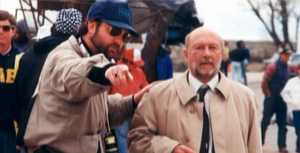
Principal photography commenced on April 11 1988 in and around Salt Lake City, Utah. Halloween 4 would mark the first time one of the movies was filmed outside of California, due to rising shooting costs. As filming was taking place in the springtime, the producers were forced to import leaves and big squash, which they would use to create pumpkins by painting them orange. The shoot would last forty-two days, with both Cornell and Harris (who would spend her eleventh birthday on the set) having to be present for thirty-eight. The script would require for two technical sequences which would add elements of action into the horror. The first involved Michael chasing Rachel and Jamie across a rooftop, which had been built four-foot above the ground by the art department. Cornell would receive a minor injury when a misstep resulted in a protruding nail penetrating her torso, causing the bloodies actress to be taken to the nearby hospital, though she returned soon after to complete the sequence. Another incident involved gaffer Garlan Wilde falling whilst placing a light above the set during the filming of of the murder of Rachel’s cheating boyfriend, Brady. Slicing his wrist, Wilde was rushed off to hospital as well, though no lasting damage was caused.
The second difficult sequence was during a high speed chase where Michael appears on the back of a pickup truck and proceeds to throw the various hunters off onto the road. The performers who Wilbur pushed off of the truck were highly trained stuntmen who, one-by-one, were to be thrown from the speeding vehicle. For the shots of Rachel driving, large plywood planks were placed under the truck and several crew members jumped up and down, rocking it from side to side to create the illusion of movement. Akkad, who was usually adamant that Halloween should remain relatively blood free, would draft in the services of special effects wizard John Carl Buechler and his studio Mechanical and Make-up Imageries (MMI, later renamed Magical Media Industries). For the shot where one of the hunters, Earl (Gene Ross, who had also appeared briefly in Friday the 13th: The Final Chapter) was to drive both Rachel and Jamie to safety, Michael suddenly appears at the window and tears out Earl’s throat. Unimpressed by how uneventful the scene had initially been, Akkad had requested that Buechler visit the set and provide graphic makeup effects for the shot.
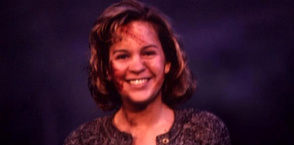
The late night shoots would soon begin to cause issues for the cast and crew, who were suffering from exhaustion. During a scene where Michael was chasing Jamie through the neighbourhood, who frantically screams for help, a nearby resident phoned the police, believing that a young girl was really in danger. This incident was surprisingly reported in The Enquirer, where they had speculated that she had nearly been kidnapped off the set. For another sequence, where Dr. Loomis is suddenly surrounded by countless Michaels (who turn out to be local kids in Halloween costumes), the severe cold weather had forced actor Pleasence to wear a hat in between shooting. But the tired production had failed to notice that he had wore the hat for most of the night’s shoot, meaning that approximately six hours worth of shooting had been ruined and the filmmakers were forced to film it once again. McElroy’s script called for a controversial climax that would echo the infamous opening scene from the first Halloween. With Michael seemingly destroyed by a lynch mob, Jamie appears wearing her a clown costume and stabs her stepmother, indicating that his evil has now been passed onto her. The original draft called for Jamie to instead kill Rachel, though the producers suggested that the film not end on such a dark note.
Alan Howarth, who had scored the previous two instalments, was asked to return to compose a new score. Having recently completed the music for John Carpenter’s Prince of Darkness (which also starred Pleasence), Howarth gained approval from the director before accepting the offer, referencing the original score with a synthesiser twist. Halloween 4: The Return of Michael Myers was released in North America on October 21 1988 and became a surprise success. On a budget of approximately $5m, the movie would earn almost $7m on its opening weekend before a final gross of $17,768,757. Critics were more impressed this time around after two disappointing sequels, whilst the fans who had been angered over the Michael-less Halloween 3 rejoiced at the return of the infamous killer. Despite falling short of the $45m gross that A Nightmare on Elm Street 4: The Dream Master would make, The Return of Michael Myers would earn enough to guarantee that the series would continue.
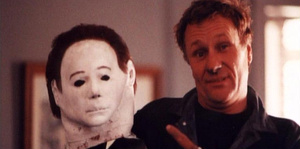

One Response to HE CAME HOME pt.4 – Halloween 4: The Return of Michael Myers (1988)